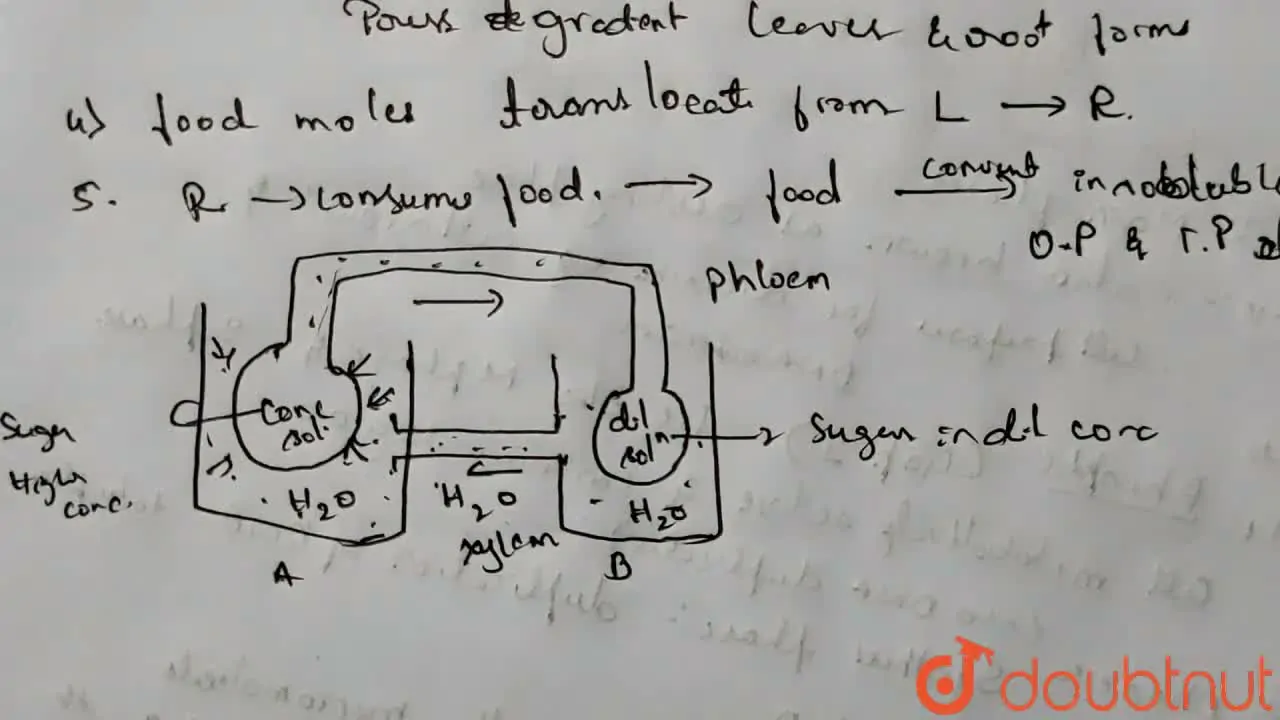Explain mass flow hypothesis?Solution in Kannada
Video Solution
Text Solution
According to Munch, food materials are translocated from the source (leaves) to sink (roots) enmass, through turgor pressure gradient that occurs between leaves and roots. The mechanism of translocation can be explained as follows:
1. Sugars are formed in the mesophyll cells during photosynthesis, and are loaded into the phloem sieve elements of veins. This is called vein loading.
2. The osmotic potential in the phloem becomes more negative, and as a result water is drawn into phloem elements from xylem cells.
3. Turgor pressure increases in the sieve tubes of leaves, and at the same time the turgor. Pressure of roots becomes less. So a turgor pressures gradient occurs between mesophyll cells and root cells.
4. As a result, food molecules in solution form, are translocated from leaves to roots.
5. In the roots the food is consumed, and in the fruits it is converted into insoluble starch. So osmotic potential and turgor pressure in the roots and storage organs decreases.
6. Thus turgor pressure gradient continues between leaves, and roots, and translocation of food also continues.

Munch conducted a physical experiment to demonstrate the mass flow. He took two osmometers A and B, with concentrated sugar solution in A and B filled a with dilute solution. These are connected by a 'U' tube C. At B are immersed in a rough containing water.
Now, water enters into 'A', due to high osmotic pressure and this creates turgor pressure. This results in mass flow of sugar solution from A to B through 'C' until equilibrium is attained and maintained. He compared osmometer A to leaves, B to roots, C to phloem, and water in vessels to xylem vessels. This clearly explains the mass flow hypothesis.
|
Updated on:21/07/2023
Related Playlists
Similar Questions
Briefly describe water potential. What are the factors affecting it?
04:33View SolutionExplain the stucture of the Dicot leaf with a labelled diagram.
01:32View SolutionThe Pressure Flow Or Mass Flow Hypothesis
02:49View SolutionMunch's mass flow hypothesis explains
View SolutionWhat is the bulk or mass flow hypothesis ?
02:13View SolutionThe pressure flow of mass flow hypothesis of pholem translocation explains that
03:45View SolutionMass flow hypothesis was given by
04:11View SolutionExplain Munch mass flow hypothesis and its applications to plants.
43:07View SolutionExplain briefly Mass flow Hypothesis.
02:50View SolutionMass Flow Hypothesis
02:05View SolutionWho proposed Mass flow hypothesis ?
02:19View SolutionMass flow hypothesis was proposed by
View SolutionExplain the mass flow hypothesis of transport in phloem.
03:26View SolutionMass flow hypothesis was first descrebed by
02:26View SolutionMunch's mass flow hypothesis explains
03:26View Solution


